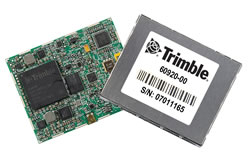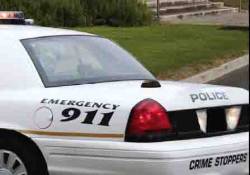
Trimble has introduced its new Condor family of GPS modules, featuring advancements in signal tracking for applications in poor signal environments, as well as two antenna companion modules.
Compatible with active or passive antennas, the Condor L1 C/A-code GPS receivers can be used in portable handheld, battery-powered applications such as sport accessories, PDAs, cameras, computers, and communication peripherals as well as vehicle tracking, navigation, and security products.
Trimble has introduced its new Condor family of GPS modules, featuring advancements in signal tracking for applications in poor signal environments, as well as two antenna companion modules.
Compatible with active or passive antennas, the Condor L1 C/A-code GPS receivers can be used in portable handheld, battery-powered applications such as sport accessories, PDAs, cameras, computers, and communication peripherals as well as vehicle tracking, navigation, and security products.
Trimble has also introduced two antenna companion modules (ACM) that combine a GPS receiver and a matched antenna in modules designed to ease integration: the Trimble Silvana ACM and Anapala ACM. Both are compatible with Trimble’s Copernicus II, Panda, and Condor GPS receivers.
The Condor GPS family includes modules with a variety of form factors and interface options:
• The Condor C1011 module measures 10 x 11 x 2.01 millimeters with a 36-ball surface-mount interface Land Grid Array (LGA) that can be electrically connected to a printed circuit board (PCB) by using a socket or soldering it directly to the PCB.
• The Condor C1919 is a 19 x 19 x 2.5-millimeter surface-mount format common with the Trimble Copernicus II and Panda GPS modules. As a surface-mount module with 28 reflow-solderable edge castellations, the C1919 requires no I/O and RF connectors.
• The Condor C2626 module, measuring 26 x 26 x 6 millimeters, leverages Trimble’s Lassen iQ form factor. It features a single 8-pin (2×4) male header connector for power and data I/O.
According to the company, the Condor modules can generate position fixes with high accuracy in extremely challenging environments and under poor signal conditions (down to -160dBm). The receiver consumes typically 37 mA at 3.3 V with continuous tracking. In addition, the Condor receivers provide a configurable 1 pulse per second (PPS) synchronized to GPS/UTC, typically within 25 nanoseconds (one sigma), and an update rate up to 10Hz.
“Trimble’s Condor family of GPS modules represents a smart alternative to GPS chipsets for a variety of consumer and commercial positioning applications,” says Steve Ruff, general manager of Trimble’s Embedded Products. “The modules offer lower development costs, multiple form factors for flexibility, and high-quality positioning backed by Trimble’s 30 plus years of GPS experience."
Trimble’s Condor GPS modules are capable of receiving satellite-based augmentation system (SBAS) corrections, including the U.S. Wide Area Augmentation System (WAAS) and the European Geostationary Overlay Service (EGNOS). They also support assisted-GPS (AGPS) techniques.
A Condor GPS starter kit is available for design engineers that includes a Condor GPS receiver in a rugged enclosure suitable for testing and data collection, a GPS antenna, PC-based analysis tools, and documentation.
The Condor C1919 and C1011 GPS modules are currently available through Trimble’s Advanced Devices dealer network. The Condor C2626 is expected to be available in first quarter of 2010.
Silvana ACM offers an onboard antenna as well as a connector for an external antenna. An antenna detection circuit automatically switches to the external antenna, when connected. The Anapala ACM also supports multiple GPS solutions, but relies on the integral matched antenna.
Trimble’s Silvana and Anapala ACMs are expected to be available in first quarter of 2010 through Trimble’s Advanced Devices dealer network.





